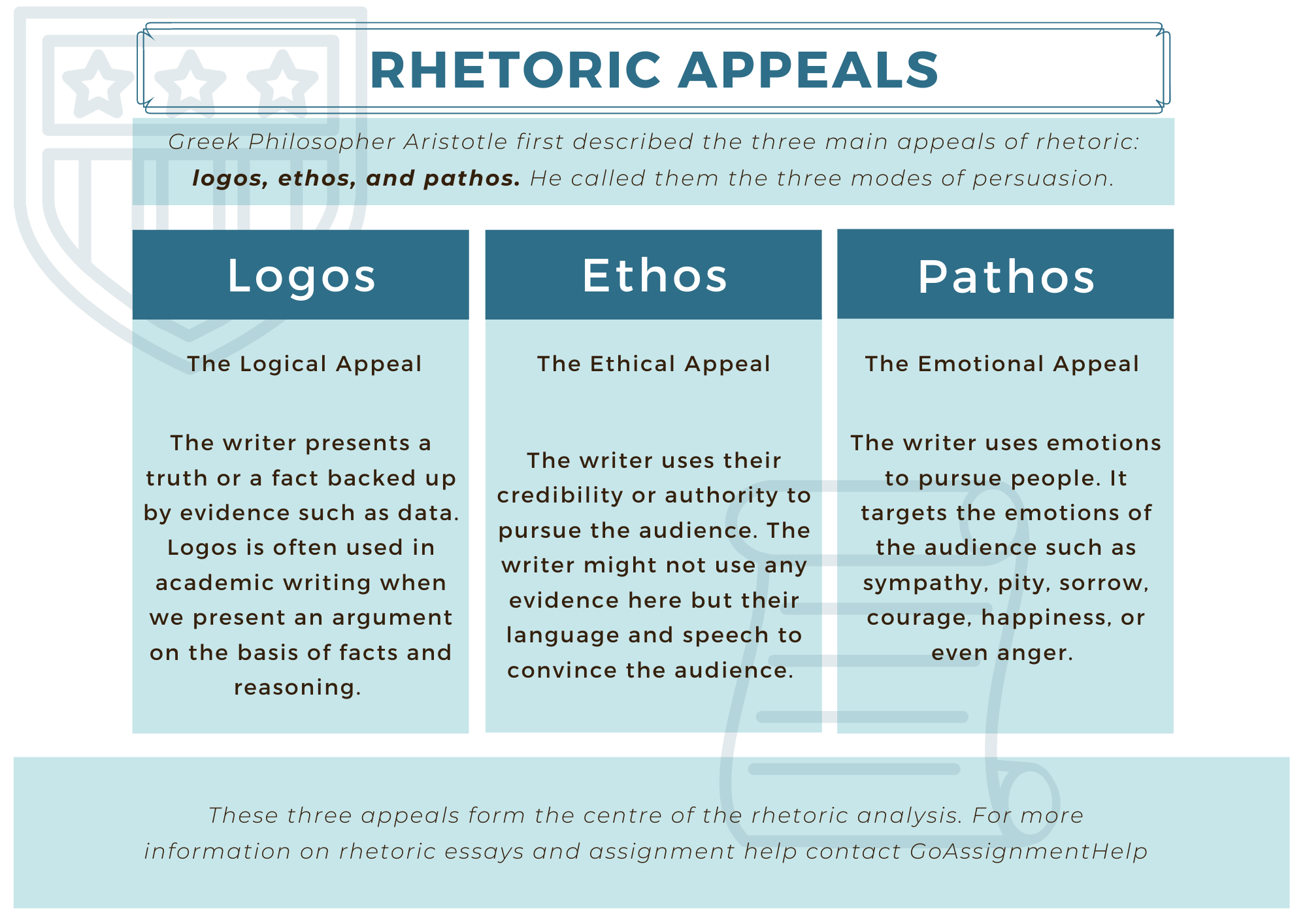How to Write a Rhetorical Analysis Essay Paper Step by Step?
Sep 29,21
Have you ever heard politicians speaking in a rally? Have you ever read an advertisement and thought of buying the product instantly? Have you ever seen how a motivational speaker sways the audience with his words?
All of these are examples of rhetorical speech! Rhetoric is defined as the art of persuasion. The writer or the speaker uses rhetorical language to get things done from an audience. Rhetoric writing appeals to the emotions of the audience and uses that appeal to inform, pursue, or motivate them. In this post, we are discussing how to write a rhetorical analysis essay paper step by step by assignment help experts.
What is a Rhetoric Essay?
Rhetorical analysis papers or rhetorical essays focus on how the message is being delivered to the audience. The structure of the rhetoric essay is similar to other essays. It includes an Introduction to introduce the topic to the readers, a Thesis Statement defining the main purpose of the essay, Body Paragraphs to persuade the readers, and a Conclusion to summarise the essay and provide a course of action.
What is a Rhetorical Analysis Paper?
A rhetorical analysis paper focuses on analyzing a text in terms of a rhetorical situation: audience, purpose, medium, context. The analysis is more concerned about how the writer has tried to impact the audience; their goals, techniques, and appeals to pursue the audience.
A rhetorical analysis paper is based on three elements:
- Description: It provides a description of the text. For example, when it was written, where it was written, who sponsored it, what are rhetorical appeals used in the text and so on.
- Analysis: It provides a deep analysis of the appeals used by the writer (we will discuss appeals in the next section). It also includes whether anything is missing in the text and why.
- Evaluation: It assesses the text and suggests whether the text is impactful. You may also suggest changes from your side that you think will make this text more effective.
How to Write a Rhetorical Analysis Essay Paper: A 6-Step Guide
GoAssignmentHelp essay writers have designed a simple process of creating a rhetorical analysis paper that has helped many students in the past. We are sharing the process with you today with the aim that it will guide you in completing your rhetorical analysis assignment.
Step 1: Identify the elements of rhetoric
As we discussed above, rhetoric writing includes 4 elements: audience, purpose, medium, context. So in the first step of creating your rhetoric analysis paper, you must identify these four elements.
- Audience: Read the text and try to analyze who this text is for? Is it for an audience that includes readers, spectators, listeners, or viewers? Try to identify the demographics of the audience. For instance their age group, interests, location, backgrounds, etc.
- Purpose: As you read the text, try to identify the purpose behind it. Why did the writer create a text like this? What could be their motive? Did they want the audience to take action upon something? What action is that and what are the instances in the text that indicate that?
- Medium: Try identifying the medium through which this rhetoric might have taken place. For instance, it could be writing, images, video, or any other platform.
- Context: What was the situation when this particular text was written? How was the climate? What was the time? Which place was it? Answer questions like these to understand the context of the text.
All these elements will help you understand the text inside-out. You will be able to understand the mindset of the writer which will make analysis writing much easier.
Step 2: Describe all the rhetoric appeals
Every rhetorical text includes rhetorical appeal that is how the writer convinces the audience. The ancient Greek Philosopher Aristotle first described the three main appeals of rhetoric: logos, ethos, and pathos. He called them the three modes of persuasion. Let us see what each of these mean from the infographic given below.

To analyze Logos in a text, do the following:
- Identify the places where the writer has incorporated facts. Do you find them logical enough?
- Do the claims of the author seem realistic?
- Does the author present any alternative arguments or counter-arguments?
To analyze Ethos in a text, do the following:
- Identify what makes the author or writer credible. How does the writer qualify to be an authority?
- You may also comment on the moral character of the writer.
- The design of the text can also indicate whether the content is ethical. Does it look professional to you?
To analyze Pathos in a text, do the following:
- See how the writer creates a bond with the audience or the point in the text when you actually start trusting the writer.
- You might include your personal reaction after reading the text. Did you feel emotional?
- State the different kinds of emotions that the writer wanted to provoke in the audience.
Step 3: Combine your analysis
Once you have identified the appeals used in the text, combine your analysis in one place. You may write in short points or detailed explanations. Write how the writer used each of the appeals, what methods they adopted and why did they adopt those methods.
Step 4: Evaluate the success of the writer
Now that you have identified the appeals, context, purpose, medium, and audience of the text. It is time to evaluate when everything is put together. State whether you think that the author did a perfect job in pursuing the audience. If you do not think that the author did a good job then you may provide your suggestions.
Note: The evaluation that you provide will be the most important part of your rhetorical analysis paper. So make sure to write it well.
Step 5: Create a thesis statement
After completing the evaluation, you have to come up with a thesis statement that defines your paper. Your thesis statement must include the following:
- The argument or the purpose of the text
- The methods used by the writer or the author of the text
- The effectiveness of the rhetoric methods
Consider the following example of a thesis statement: “In Technology: A Bane For Students, the author argues that technology should not be a part of education using data insights, intriguing anecdotes, and his experience as a professor.”
Step 6: Organise your ideas and create a structure
You now have all the arguments, data, and explanations with you that you can use in creating your rhetorical analysis assignment. So, start organizing your ideas in chronological order and create an outline of your paper. Here is a sample structure for you:
Introduction
- Introduce the topic to the readers.
- You may include some background information.
- End the introduction with your thesis statement.
Body Paragraphs
- Include one paragraph for each appeal (logos, ethos, pathos).
- Present the analysis and evaluation.
- Include examples.
- State what changes could be presented in the text to make it more persuasive.
Conclusion
- Summarise the paper.
- State the result of your analysis and suggestions if you have any.
Rhetorical Analysis Essay Paper Writing Tips
Before we end this post, here are some of the best tips on creating a rhetorical analysis paper. They will help you in creating a clear, concise, and powerful rhetorical assignment.
#1 Practice Rhetorical Analysis: If your semester includes rhetorical analysis writing, you can practice it by analyzing your favorite TV shows, books, or blogs. Nowadays, you may find many motivational speakers sharing their knowledge and inspiring millions on social media. Just take one of their videos and prepare a rhetorical analysis on it.
#2 Read Examples: Find rhetorical essay examples or rhetorical analysis samples on the internet or ask your teacher to provide you with some. Reading the examples will help you understand how to organize the ideas and create the structure of your rhetorical analysis paper.
#3 Choose Strong Words: Rhetorical essay must include powerful words, descriptive words, and adjectives. Make sure to include them wisely in your writing to add strength to it and to make your analysis clear. You must not always quote the author as it is. Try paraphrasing their words to make your essay more compelling and original.
#4 Finish Strongly: The conclusion of the rhetorical analysis paper must be strong and impactful. Instead of phrases like “to summarise” or “to conclude”, use strong phrases like “recognize that”, “the analysis of the text shows that”, etc. You do not have to argue, rather state your analysis throughout the assignment and also in the conclusion.
#5 Revise and Polish: Last but not the least, always revise your paper thoroughly and polish your language before you decide to submit it. Make sure that the citations are correct, there are no grammatical mistakes or any other linguistic inconsistencies. Format your paper properly and make it more readable.
Consult GoAssignmentHelp Essay Writers for Rhetorical Analysis Paper Help
If you need any kind of help in creating a rhetorical analysis paper or a rhetoric analysis essay, send us your requirements without hesitation. We have the best academic assignment help experts and essay writers who can work on your rhetoric assignment and guide you. We offer round-the-clock assignment help.





0 responses on "How to Write a Rhetorical Analysis Essay Paper Step by Step?"